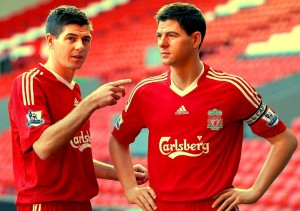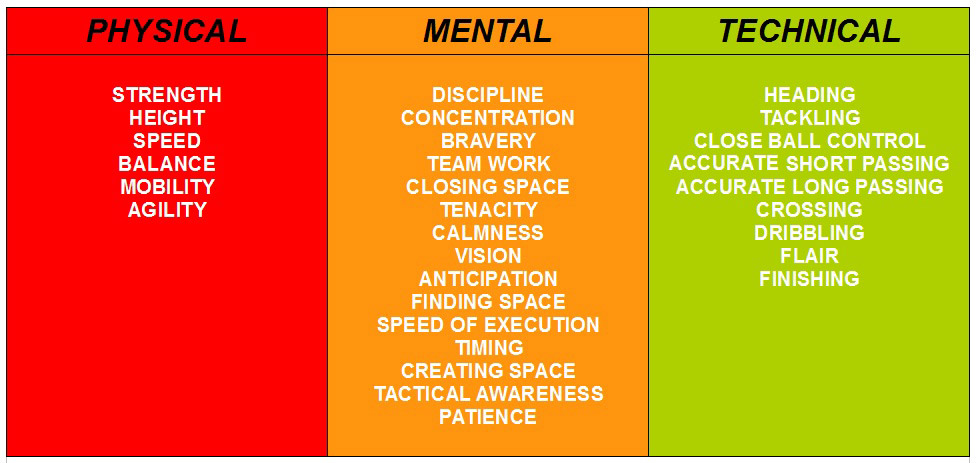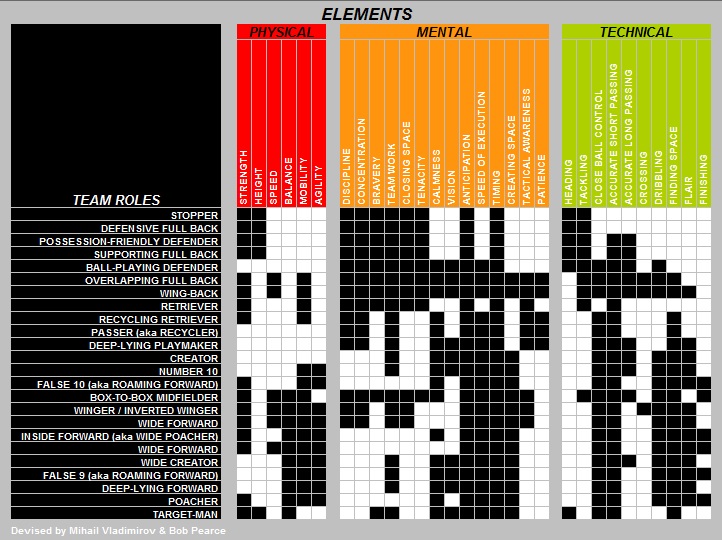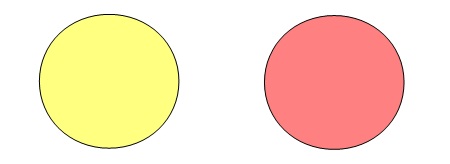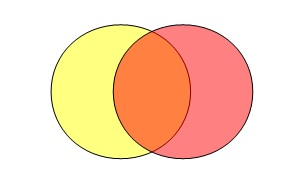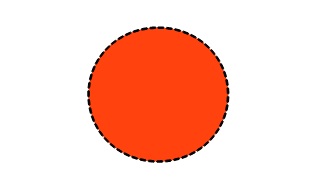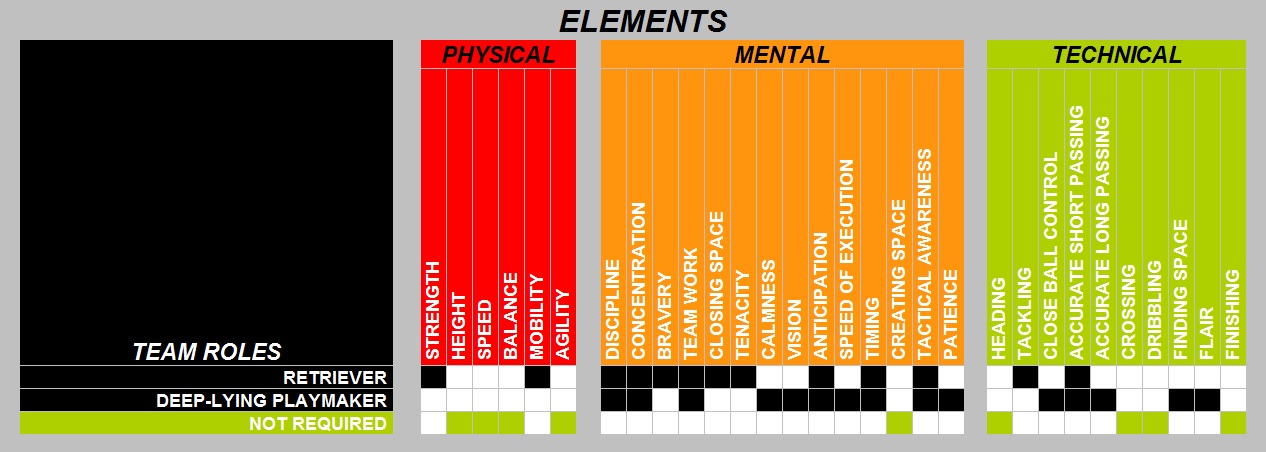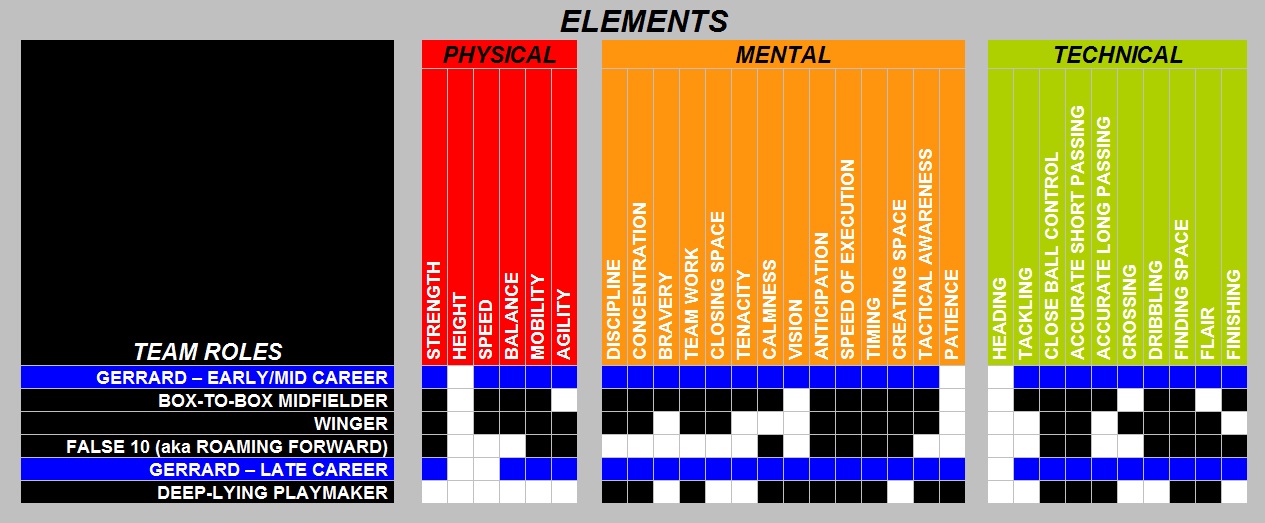By Bob Pearce.
In May I concluded ‘Who’s the Star, the Players or the Team?‘ with this observation and request.
Each of the different part time roles will be made up of what is required of the player when his team is in possession (both on the ball and off the ball), and what is required of them when their team are not in possession. It is an indication of our current crude and clumsy view that many of these requirements involve no actual contact with the ball (e.g. covering, passing options, holding up, stretching and squeezing space, holding shape, pressing, distracting, blocking passing options, etc.), and yet it is each individual’s contact with the ball that is measured in the statistics that are currently gathered and analysed.
How do we identify a player with a track record of delivering these requirements that are the ingredients for successful relationships when so many of the statistics focus on individual player contact with the ball rather than what goes on within their web of connections?
Perhaps there is a footballing Mendeleev out there who can produce an equivalent of the periodic table that captures these elements and combines them into requirements.
I lost patience waiting for someone to step forward, and made an attempt at building that table of elements myself. What I wanted to do was find a way to drill down from a ‘team’ level view, past a ‘unit’ level perspective, push on beyond a ‘player’ level focus, and try to get to a set of basic ‘elements’ for all outfield players. Other words that could be used for ‘elements’ might be ‘capabilities’ or ‘strengths’.
I imagined that having got down to this basic ‘elements’ level, it would be possible to look at how these ‘building blocks’ combine to construct different roles, go on to identify compatible pairings of roles, and then assemble a range of diverse roles into balanced teams.
This table of ‘elements’ that I pictured would make the requirements of each team role apparent, and allow individual player’s abilities and limitations to be matched against their suitability for a variety of roles. Building from the bottom up, it could identify the strengths and weakness of a whole team.
How hard could it be (when you don’t know how hard it’s supposed to be)?
As with any model, the initial prototype will inevitably come to be seen as crude and clumsy as, over time, enlightenment reveals the currently invisible flaws. That’s fine by me. I am just keen to test the idea out in principle and see if it helps to move the conversation forward.
I started out by working on identifying a list of basic ‘elements’ that I believed could be combined into each of the 24 team roles that Mihail identified in his Tactical Glossary. Eventually I arrived at 30 ‘elements’. This is a working list and it is expected that more ‘elements’ may be identified when we get a few miles further along the road.
An important aspect of these 30 ‘elements’ for me was that they were all qualities that you could visibly ‘see’ and ‘point to’. I felt this was quite important because it avoided the types of ‘invisible’ qualities that have to guessed at like Effort, Confidence, Attitude, Imagination, or Speed of Thought. I’m not suggesting that these do not exist or are unimportant. What I am saying is they are all ‘internal’ and I am focusing in what is ‘external’. This ability to ‘see it’ and ‘point to it’ also allows for the possibility of some form of measurement of these ‘elements’ being developed at some stage.
The 30 ‘elements’ seemed to fall into the three natural categories of ‘Physical’, ‘Mental’ and ‘Technical’. I also ordered them in each group from those that seemed more reactive through to those that seemed more proactive.
You may disagree with the exact words chosen (for example ‘Flair’ is used rather than ‘Creativity’ or ‘Unpredictability’) but I tried to focus on terms that offered the ability to ‘see it’ and ‘point to it’.
One thing that was particularly encouraging for me was that only nine of these 30 ‘elements’ involved contact with the ball. Not surprisingly, these nine on-ball ‘elements’ made up the ‘Technical’ group.
When each of the 24 team roles is cross-referenced against the three groups of ‘elements’, they can be combined to construct each team role. We then have a table displaying the 24 team roles and their component ‘elements’
Mihail was an enormous help with checking my thinking throughout. We then spent a fascinating hour together allocating the ‘elements’ to each of the team roles. In fact it could be said that this whole model is a combination of Mihail’s ‘elements’ of Tactical Awareness and Concentration being brought together with my ‘elements’ of Vision and Tenacity to provide diversity and balance. It would not have been made by either of us alone.
Click on the table for an enlarged view
Before talking about the possible uses of the table, I’ll just make a few initial observations about what seeing all the current team roles mapped out in this way reveals.
Only two of the ‘elements’ were found within every one of the 24 team roles. Accurate short passing may have been the more obvious candidate for omnipresent ‘element’, but this was not part of the Stopper and Defensive full-back roles. The two perhaps surprising omnipresent ‘elements’ were Anticipation and Timing, both interestingly from the ‘Mental’ group of ‘elements’.
At the other end of the spectrum, the ‘elements’ which appear least among the 24 team roles are Crossing, which is a component in just three wide roles, and Patience, which is required in just the five roles involved in the recycling phase of possession.
Visually the table also helps to quickly show the similarities and differences between some roles. You can find three pairs of roles that have identical combinations of elements.
These ‘twin’ roles are;
Stopper and Defensive full-back,
Possession-friendly defender and Supporting full-back,
Inside-forward (aka Wide poacher) and Poacher.
Essentially these ‘twins’ are the same roles operating in different locations and therefore engaging in different relationships within the team. It is logical to expect that a player should be able to move comfortably between these ‘twin’ roles.
The other 18 team role profiles are assembled from unique combinations of ‘elements’.
When I began working on this project my thinking was that such a table could be used in a variety of ways. Given my suggestion in ‘Who’s the star…’ that
No ‘position’ or ‘part time’ role exists until the rest of the team exist for them to relate to.
The original aim was to display the requirements each role must deliver in order for other roles to be able to deliver what is required of them (I’ll pause while you just re-read that again…..). At this stage it is hard to grasp this in the multiple relationships within an entire team, but it is possible to think initially in pairings. Two centre-backs, two pairs of wide-backs and wingers, two central midfielders and two strikers.
Take two players with diverse combinations of elements. Individually they have both strengths and weaknesses against the requirements of the partnership.
Where there is some overlap we begin to see some ‘understanding’. Some weaknesses are being covered by the other’s strengths, while others remain uncovered. The greater this ‘understanding’ and fulfilment of each other’s requirements, the better the overlap becomes.
This new colour being produced is neither red or yellow. It is a colour that only exists when the two work together. It is not the ingredients. It is what happens between them. It is not the cheese or the bread, it is what happens when they are put together. It is a sandwich.
Using the example of the ‘destroyer’ and ‘creator’ roles that work as a midfielder partnership of Retriever and a Deep-lying playmaker, we can see the ‘elements’ of the two roles and how, when they combine, they are both stronger because their weaknesses are mutually covered by the other’s strengths
A mid-field ‘destroyer’/’creator’ partnership does not require the ‘elements’ of Height, Speed, Balance, Agility, Heading, Dribbling, Creating Space, or Finishing.
The Retriever needs to take care of the Mobility, Closing Space, Tenacity, Strength, Bravery, and Tackling, which the Deep-lying playmaker is weaker on.
The Deep-lying playmaker needs to take care of Finding space, Close ball control, Calmness, Patience, Vision, Flair, Speed of Execution, and Accurate long passing, that the Retriever is weaker on.
It is not about what I require from you. It is about what the relationship requires from us both for it to ‘work’ and be effective.
If the cheese doesn’t have to worry about the bread’s job, and the bread doesn’t have to worry about the cheese’s job, they can both focus on doing what they do best. The sandwich will then take care of itself.
Similar charts can be created for all the pairings within the team.
Another use the model offers is the possibility of identifying new combinations of ‘elements’ that will create entirely new team roles that do not currently exist. For example, perhaps the ‘elements’ required of a Ball-playing defender with the addition of Vision, Tactical awareness, and Patience, could produce a new hybrid breed of something that may be called a Profound playmaker.
It may even be possible to find that the model highlights potential entirely new ‘elements’ that could be introduced into the game, which would stir a whole new ingredient into the construction of team roles, with all the resulting repercussions on the team’s make up. Of course this opportunity to play ‘Frankenstein Football Manager’ should not lose sight of the reality that, as with any evolution, whether or not these fascinating and unusual new hybrids and mutations are beneficial and survive in the real world is another story entirely.
The other major use that I imagined at the beginning was to replace the team roles with squad names. The table can then be used to list individual players and identify the elements that they demonstrate. A squad table could offer a number of possibilities.
For example, here we see the ‘destroyer’/’creator’ midfield partnership again with an ‘elements’ profile for both Alonso and Macherano.
We can see at a glance that all the requirements of the partnership are covered. This combination is all strengths and no weaknesses. This means that they both allow the ‘best’ to come out in each other. They are not just ‘red’ and ‘yellow’. They are not just ‘orange’. They are now a vibrant, glowing, and exciting ‘orange’.
The phrase ‘more than the sum of the parts’ may be forming in your mind. I’d suggest that the ‘more than’ in this case comes from the confidence that such a compatible pairing allows to grow. When requirements in the relationship are consistently and reliably being met, trust can grow and confidence can become established. A lot of the uncertainty is removed from the relationship. They both know that the other will deliver what they require from them. They don’t need to make allowances for uncertainty. They know that the other will be there and they’ll get what they need. This puts the partnership on an upward spiral of a positive feedback loop. If they both know they’ve got a partner that just ‘loves the jobs they hate’, they can then focus their attention on doing the jobs they love. It allows them both to be that one step ahead of the game, and that will allow them both the opportunity to appear even better.
This throws up a challenge to one of the great football clichés which tells us that ‘form is temporary, but class is permanent’. Such a view refers to the player as though they operate in isolation, and any apparent failing is due to something ‘internal’ like an injury or a crisis of confidence. If judged by goals scored or assists delivered you may identify a drop in the numbers and attribute this to the individual. Then if the numbers pick up again you can attribute this to the individual too. They’re ‘back in the groove’ or ‘found their mojo’.
An ‘elements’ model would suggest that there are many more likely possible explanations for an apparent loss in form. In an ‘elements’ model players are dependent on their partnerships having the ‘elements’ that are required for both roles to complement each other. If the partner doesn’t deliver, if they are injured, if they are replaced, these could all expose gaps in the partnership and reduce its effectiveness. Are they suddenly ‘not good enough’? Or is the relationship no longer ‘clicking’ because the mix of ‘elements’ in the partnership has become less compatible?
My favourite piece of recruitment advice is ‘You can try to teach a turkey to climb a tree, but it’s much easier to just recruit a squirrel’. The squirrel is a natural fit for the job of climbing trees. He bloody loves it! Mascherano was born to be a destroyer ‘squirrel’. Alonso was born to be a creator ‘squirrel’. So between them Alonso and Mascherano had all the necessary ‘elements’ to deliver on the requirements of the partnership. And because of this compatibility they were not just two different breeds of ‘squirrel’, they were two different breeds of very confident ‘squirrel’.
To describe them as ‘brains and brawn’ or ‘beauty and the beast’ would be just more of the alliterative lazy language so fashionable today. This partnership was a midfield ‘knife and fork’. One breaks it up, and the other serves it up. Working together, the meal gets eaten.
Now stop for a moment and imagine trying to eat with two forks. Imagine the absurdity of saying “This is a brilliant fork. What I need is another brilliant fork just like it”. You don’t need to imagine it. This is what that looks like.
Now we have two Alonsos and all his weaker aspects are exposed. Have two Alonsos resulted in two ‘great’ Alonsos? No, two Alonsos actually means two ‘poor’ Alonsos. We now have two players double-delivering some requirements, while there is no Strength, Mobility, Bravery, Tenacity, Tackling or Closing Space being delivered. In fact, by trying to do the same job they will begin treading on each other’s toes, and even create hesitation due to the uncertainty over who is taking responsibility for these requirements.
A whole team of so-called ‘marquee’ star names could be both a thrilling list of strengths with an utterly alarming set of weaknesses. What would be their chances of success? It is often said in the modern game that the ‘best’ players want to be playing in the Champions League because that is where all the ‘best’ players are. Isn’t this like the ingredients of a meal making the mistake of wanting to be in a ‘Galacticos’ meal of ‘great’ ingredients, not realising that the ‘great’ part of the meal comes from the chef’s skill in combining diverse ingredients into a compatible meal?
Another option that the ‘elements’ table allows is to match a player’s identified combination of elements with the various team roles that they could be suited to. You would expect that each player’s ‘elements’ profile would match exactly to a particular role that they are primarily associated with. But beyond this many players can be expected to have an ‘elements’ profile which is suited to a variety of roles.
A squad ‘elements’ table may identify roles that a player’s ‘elements’ profile can cover that they are not currently used in. The obvious examples would be the three ‘twin’ roles listed above, where a player should be able to move between the two roles comfortably. But a player may also have currently unused ‘elements’ which mean they could easily slot into another role. This may be a fixed role for a whole season, for an individual match, switching roles mid-match, or fluidly covering two or more part-time roles all at once.
For example, a Wing-back can be used as an Overlapping full-back if they also have Flair available in their ‘elements’ profile.
A Box-to-box midfielder can be used as a False 10 if they also have Agility and Flair.
A Recycling retriever is a Passer (aka Recycler) that also has Strength and Mobility.
A Number 10 is a Creator with Mobility and Agility.
A Wide forward can be used as an Inside-forward (aka Wide poacher) by replacing their Speed with Calmness.
A coach could be seen as an ‘elements’ chef, collecting together a range of ingredients with diverse and complimenting qualities, then selecting and blending them skilfully to produce a meal. With the increasing requirement that players be able to fulfil multiple roles, a coach with such versatility available would mean that their team sheet would not be an obvious indication of how their team planned to work together, or what in-game shuffling of the pack could be applied.
Rather than focus on a player as defined by a ‘position’, the ‘elements’ model focuses on the attributes within their ‘elements’ profile. It looks at what they have available that would make them suitable to meet the requirements of a number of roles (and possibly what areas of potential could be developed to make them suitable for even more roles as they mature). You are not buying a ‘Centre-back’ or a ‘Striker’, you are buying a number of roles all-in-one. A kind of ‘Swiss army knife’ of a player. This surely makes such players more ‘valuable’ because of their multiple applications. It also makes them ‘future proof’ as their ‘elements’ profile will allow them to adapt to new roles as the game continues to evolve, or if they lose some ‘elements’ through age and injury.
Lee Mooney’s ‘Go-Compare the Market’ model allows you to quickly scan the marketplace to identify players that are within your price range. Maybe the property website ‘Right Move’ is a closer comparison. An ‘elements’ model like this could then work like a property surveyor’s report, providing a profile detailing what is in place, what could be developed, and how it could be used.
Another interesting use of the model is the ability to trace the growth and decline of some ‘elements’ in an individual player’s profile over their career, mean they are better suited to different roles. Gerrard’s extraordinary ‘elements’ profile allowed him to move between a variety of roles through his career, drawing on different combinations of those ‘elements’.
Under Houllier and in Benitez’s first year he was a Box-to-box midfielder.
In Benitez’s second season he was used as a Winger.
In the third season he played both Box-to-box midfielder and Winger roles depending on Benitez’s tactical plan.
In the summer of 2007 Torres arrived and Benitez played Gerrard as a False 10 to get the best out of Torres.
Under Hodgson and Dalglish he played as both False 10 and Deep-lying playmaker. Rodgers finally settled Gerrard into a permanent Deep-lying playmaker as his Speed reduced and his Patience developed.
One final possibility I’d suggest for the model is that, at the highest level of focus, when a match day line-up is announced, it would make it possible for player profiles to be combined into a team profile. This would demonstrate both the potential and actual diversity and balance available, along with any exploitable gaps.
If I had the ‘element’ of patience I’d have developed the model in more detail and explored lots more possible uses before sharing it. That is a gap and a weakness for me. This first draft of the model has clear limits. I’d be very surprised if no additional ‘elements’ were identified, or if current ‘elements’ were not refined or replaced. There is also plenty of room for debate at some point about suitable names and definitions for ‘elements’. I know that in the real world ‘elements’ are not black and white, meaning Speed is not something you either do have or don’t. It may be helpful to refine the assessment of ‘elements’ with various scales like S, M, L, and XL, or Poor, Adequate, Good, and Excellent. A further option to improve the model may be to look into combining measures for ‘elements’ to get indicators for some of those hard-to-reach parts of the game like ‘hesitation’.
You can disagree and debate the detail, but the key question for me at this point is does this model have any value?
Like any model or tool, what it means comes with how it is used, and I don’t claim to know every potential use. There are limits to my imagination. In the same way that strengths of some roles can cover for the gaps in other roles, crowd- sourcing imagination will help to widen the list of potential uses and meaning for the model.
Finally, I have to entertain the idea that there actually has been a footballing Mendeleev out there all this time who has been working hard to produce an equivalent of the periodic table, and the reality is that it takes longer to do the job properly than my ill-informed patience was prepared to wait. If this is the case, all I ask is that you let me know that it is on the way and I will go and work on developing my patience.
All quotes taken from ‘Who’s the Star, the Players or the Team?‘
For a more detailed examination of midfield partnerships read Mihail’s article on Benitez’s time at Chelsea.
The rest of this post is for subscribers only.
[ttt-subscribe-article]
